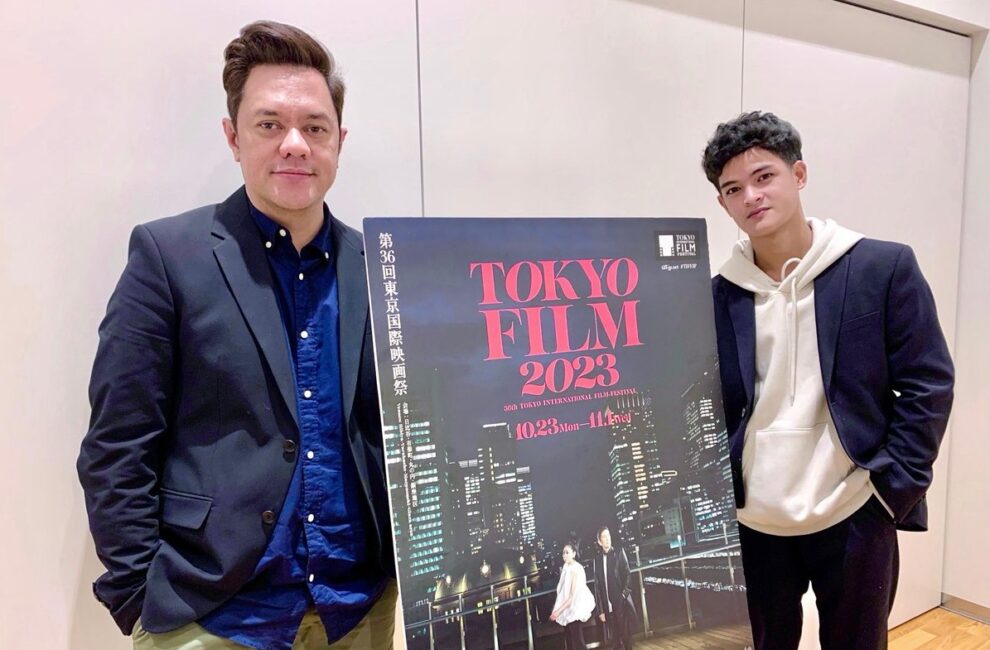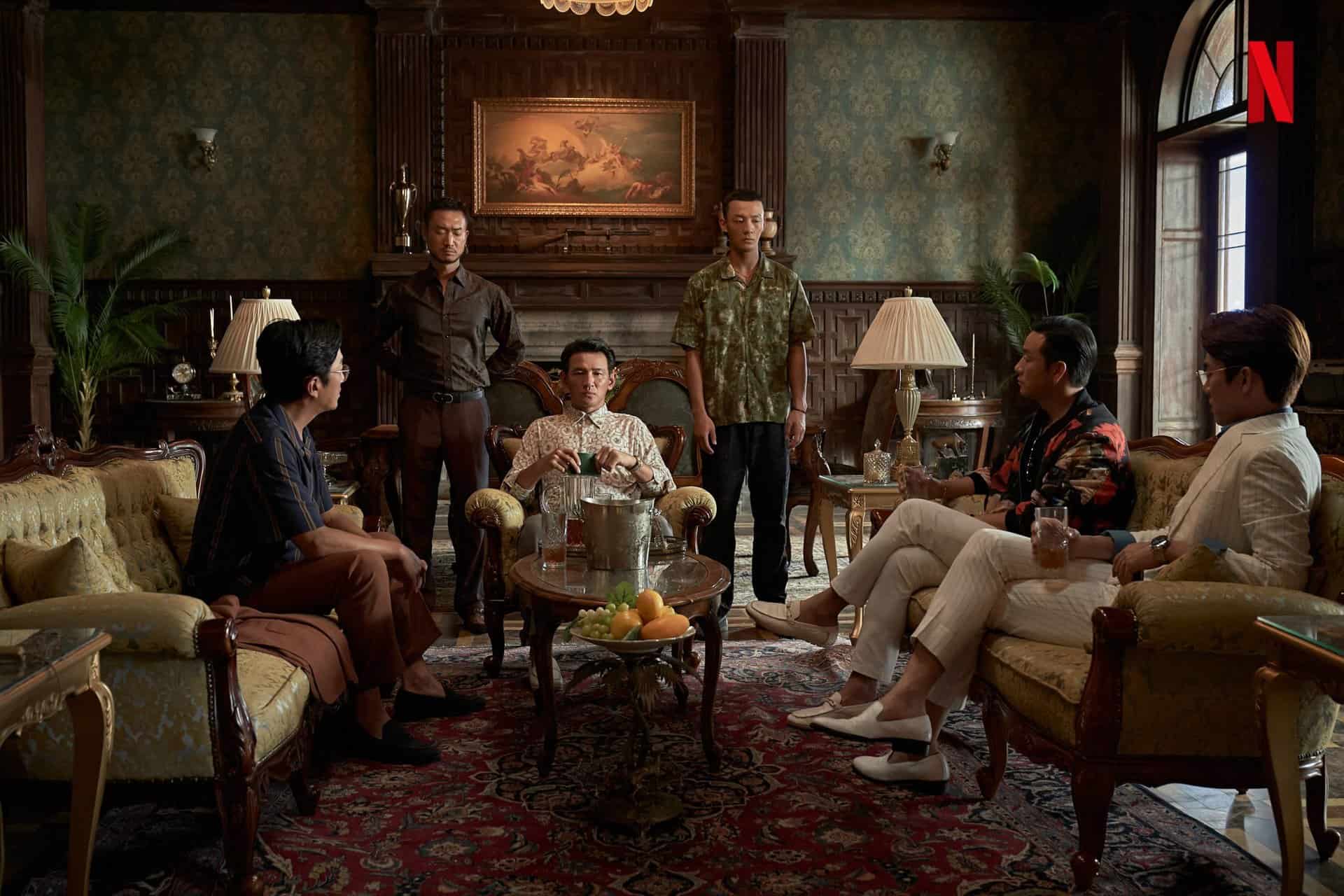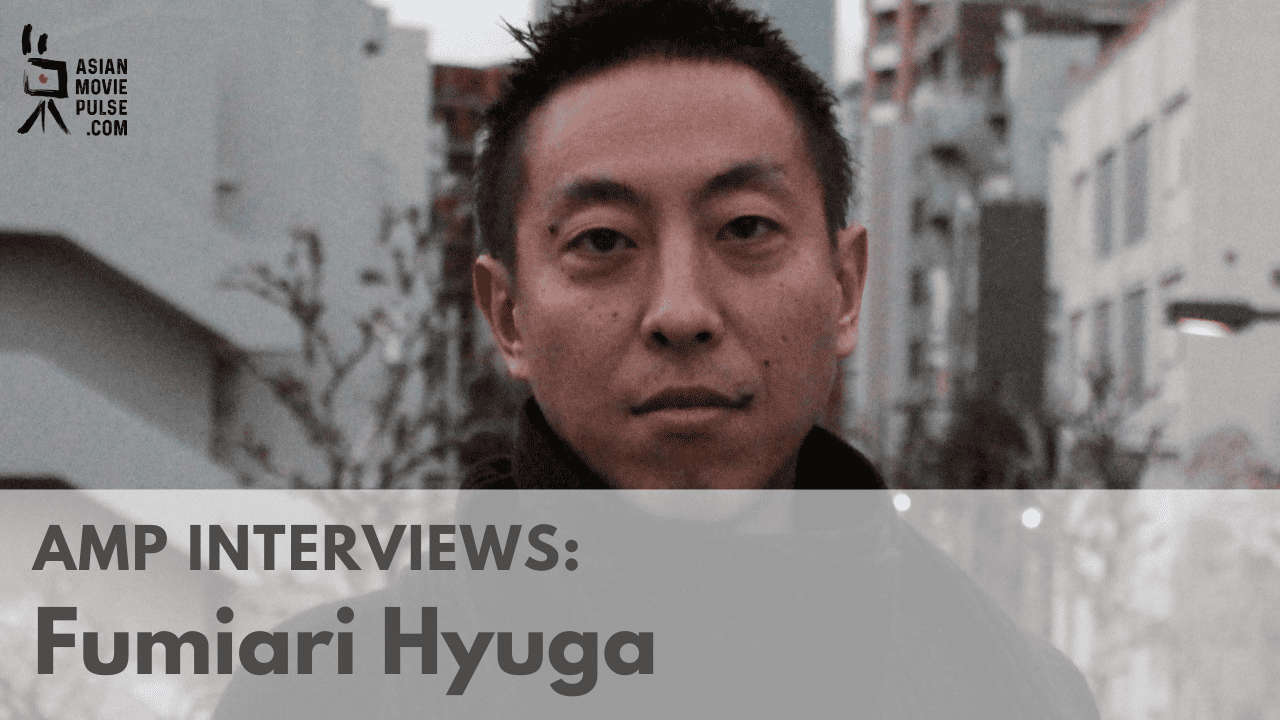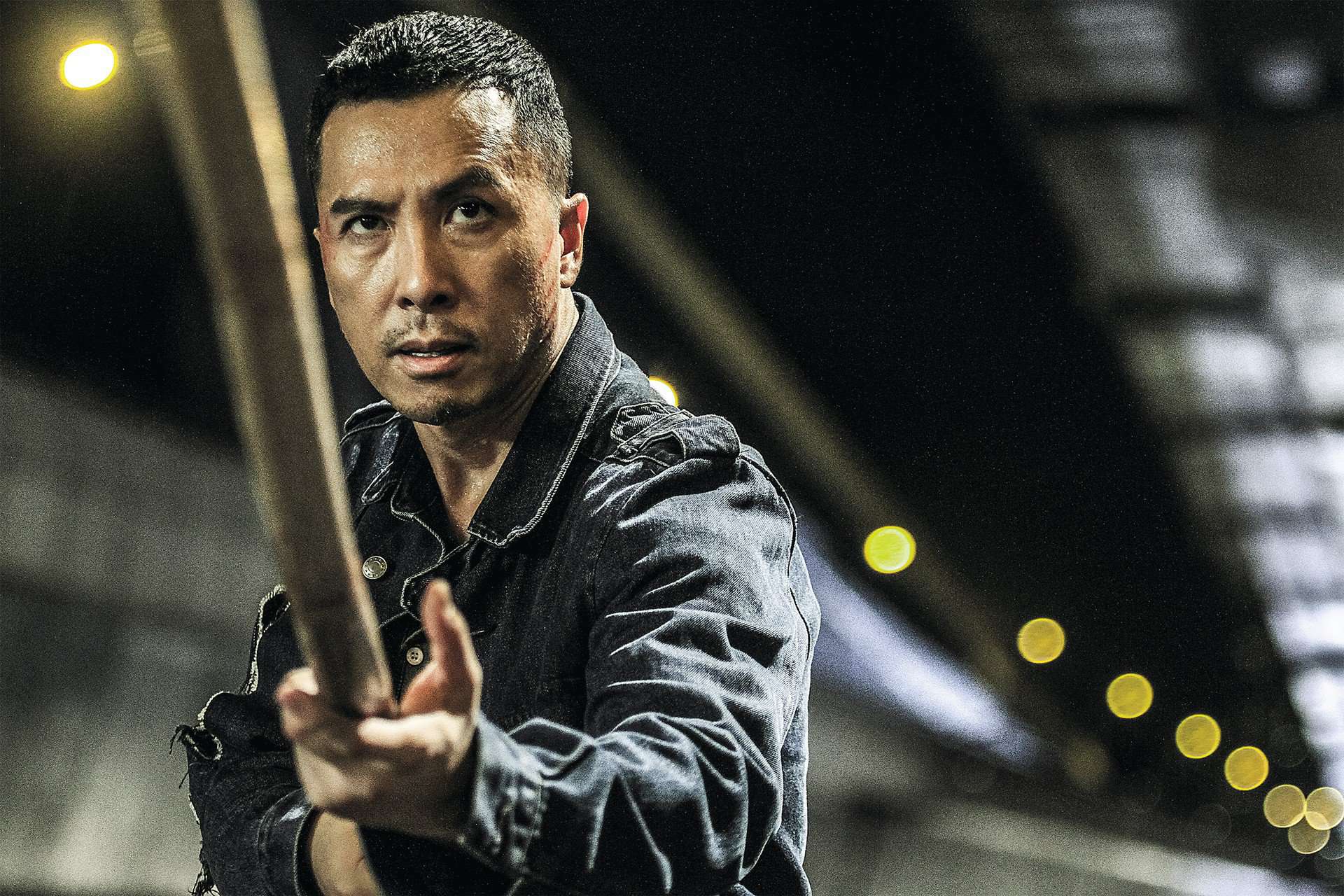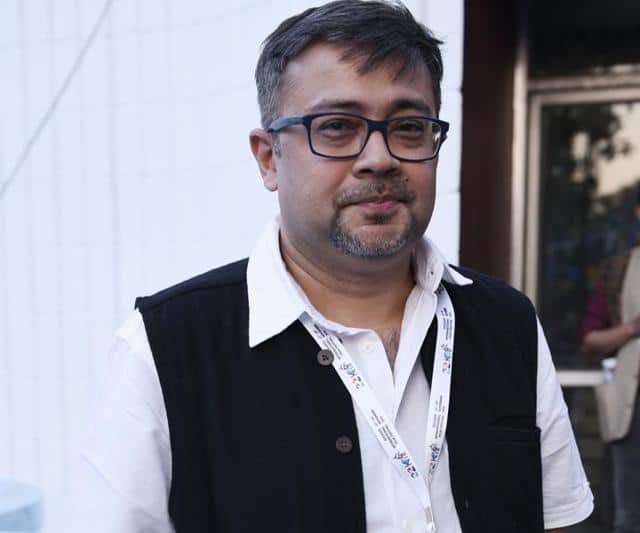Sheron Dayoc, an alumnus of Sundance Institute, Asian Film Academy, and Next Masters Tokyo, honed his craft by directing documentaries including The Asian Pitch winner, A Weaver's Tale (2009). His debut narrative feature Halaw (Ways of the Sea, 2009) won awards at Berlinale and Asia Pacific Screen Awards, and The Crescent Rising won the Best Documentary at Busan. Women of the Weeping River (2016) won the Best Picture, Best Actress, and Best Supporting Actor at QCinema and won the Best Picture, Best Direction, Best Supporting Actress, Best Screenplay, Best Cinematography, and Best Editing at Gaward Urian Awards.
On the occasion of his presence at Qcinema and the screening of his latest work, “The Gospel of the Beast” screening in Tokyo, we speak with him about his collaboration with Arden Rod Condez and Sonny Calvento, the 7 years it took him to follow up on his previous film, how violence is created and the real events behind the story, the Filipino movie industry, and other topics.
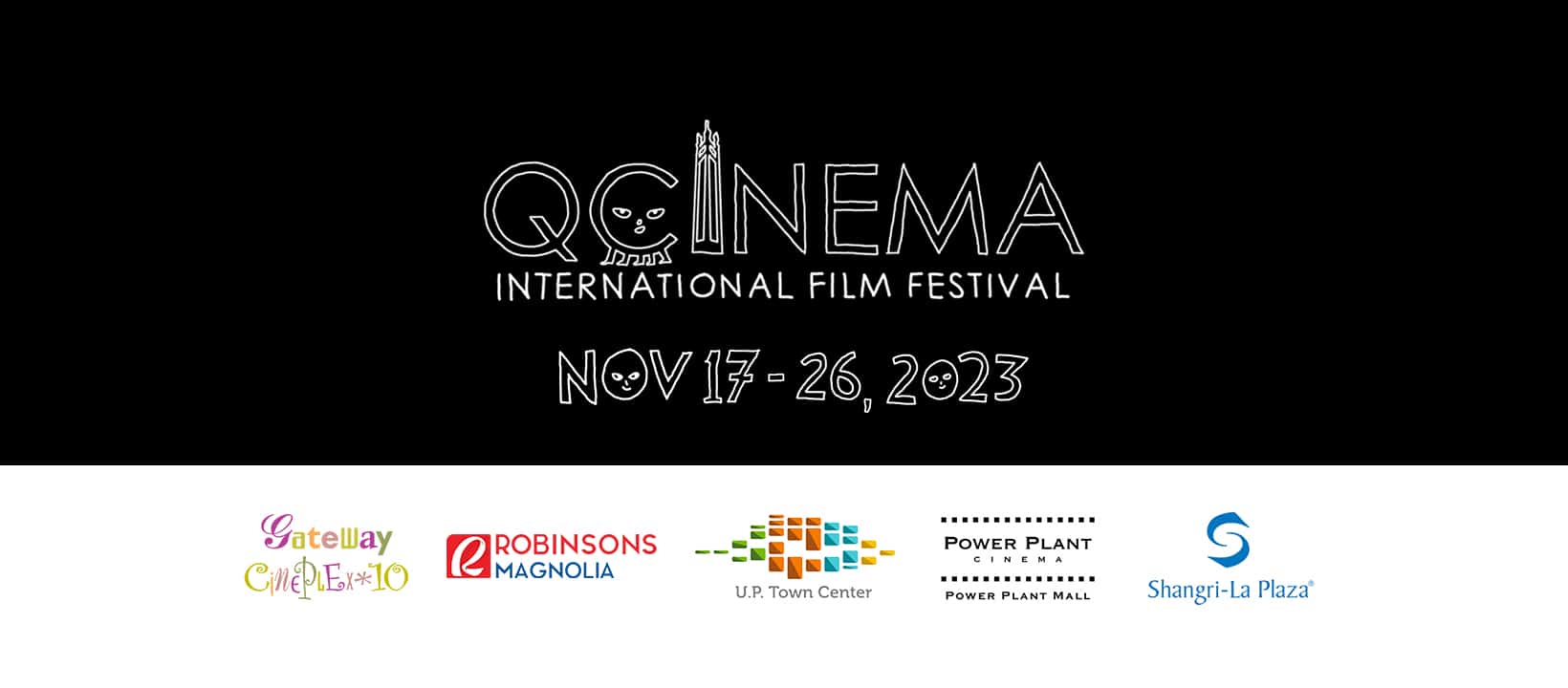
Can you tell me a bit about your cooperation with Arden Rod Condez?
Basically, the three of us, me, Arden and Sonny Calvento have made a collaboration, but we basically allow ourselves to dive into our own projects first. Arden and Sunny have a different connection since they have worked together for almost 15 years in ABS-CBN before, and I have my own projects. What I usually do is first I write my script, and when I am confident with the treatment, I ask them to read it to give feedback on how to improve it, and then I move on with the scriptwriting, and that is the process regarding script development. Regarding producing, it is basically a collaboration. For “Gospel of the Beast” the three of us are co-producers, so each of us has his own responsibilities, function for the production. I am more focused on the creative aspects, Arden and Sonny are more involved in the logistical process, and Arden is more focused on the post-production etc.
Does it also make sense financially for you to work together, when you are trying to raise funds for example?
Yes. What we do is that, before we start pitching, the three of us talk and on our pitching concepts, to make sure they are convincing. So, when you present it to a certain platform or a financier, more or less, it has been fleshed out already. In terms of financing, we schedule it; who will apply at which part.
There was a gap of 7 years between your two films. Why so long?
I was still trying to figure out what to do, because as you know, the film industry is quite uncivil, and I was wondering if, maybe, I should pursue advertising. An opportunity came to pursue advertising and this was basically me trying to find financial security for the past 7 years, which led to me having my own production house, where we shoot film commercials, films and series. In order to have a foundation regarding financial resources.
“The Gospel of the Beast“ shows how violence is created, where it comes from. What is your opinion on the subject?
Yes, violence comes from suppression and the ones who commit violence are always people who have been victims of violence. It is instinctive human behavior to be violent because of fear, of uncertainty, because of loss. I think in an environment that fosters a healthy mental and financial security, we would have lesser crime but if you are subjected to a lot of trauma, like poverty, which I also think is a form of trauma, or war, then this will probably lead to violent behavior, and that is how violence is created. Just like in my previous film, “Women of the Weeping River”, there is a generational trauma, brought from years of family vengeance.
In the end, would you say that the protagonist is a good guy or a bad guy?
The narrative is really the Gospel of the Beast, he basically ends up being a bad guy. The very discourse of the film is why a certain person can turn into a beast. At some point, we don't have a choice, things are beyond our control; because of the environment that we are in, we are transformed into beasts.
Tell me a bit about Berto, who is essentially the leader of a group of killers but is also like a father of them.
In real life, people like him would not be like bosses, they would be more manipulative and that is how Berto is. Most of them are money pillagers. They would come across very sincere, very concerned but that is actually a way of manipulation; it is the reason why you cannot easily say if they are good or bad guys, because that is how manipulative people are.
In the film, you show Berto being employed by someone else. Who are these people?
Someone influential, someone rich, a politician.
And does this thing that happens in the movie, is still happening now?
Yes, it became so rampant that people started becoming passive about it, accepting even. People just get in those groups, thinking that they are members of a gang and that's it. That is the danger, that people are getting used to it.
Can you tell me a bit about the ending. Its idyllic style seems ironic.
It was actually an editing decision, it wasn't part of the script. We thought that the suggestion of editor Lawrence S. Ang to end with a trip would be a profound one because it symbolizes another trip in that, in the scene where he ties the dog, he is basically leaving a part of himself, his innocence in a sense, to go somewhere else. Basically that's a more heartfelt presentation on how a person becomes a beast. It is not just committing violence but giving a huge part of who we are as humans, essentially we give up our humanity.
If the movie continued, what would happen next?
(laughter) I am not sure yet.
In the beginning, you show that the teachers in the school the protagonist attends have no clue what is happening among the students. Did you want to show that what happens in the end is also a failure of the school system?
Definitely. Sometimes teachers, authorities are essentially a representation of the government, in that they may know of the struggles but they do not understand the struggles. It is a distant reality to them. The story of Matteo is actually a very typical Filipino story, but I didn't want to dive into the poverty part of it, I just wanted to present it in such a way that it is the way of life from the grass roots, it's no big deal, that's how it is. Even if the parents are around, kids normally work, that is the way of life here.
How did the casting work?
When I was developing the script, it wasn't really Jansen who was in my mind, what was important for me was to develop a character without limiting myself to a particular actor, just really fleshing out the dimensions of the character. During the audition process, we were scouting, we couldn't really find the right person, a fragile looking kid who can still deliver such a good performance, because the main character is quite demanding in terms of the emotional requirements for the actor. We tried a lot but eventually we ended up with Jansen because he was the only one who could really deliver the expectations of the character.
Check also this article
And for Berto?
For Berto, we did not audition, Ronnie Lazaro was in my mind from the beginning.
Were the violent scenes, the ones where the protagonist is fighting, difficult to shoot?
Yes. The challenge during the shoot was to balance it, we didn't want it to be an action film, we wanted the fighting scenes to be a bit more organic, less choreographed, so that it wouldn't look like an action film. We had rehearsals of course in terms of blocking, it took a while to find the right performance. When kids fight, it is really random, it is not choreographed.
What did you want to do in the visual aspect of the film?
The intention was to create a contrast from the story, to create the feeling that the basic story is violent, personal, but in terms of visuals I thought to make it more accessible, reaching for texture. It also captures the world of the character, because of his point of view.
What is your opinion of the Filipino movie industry right now?
I have been asking that intensely, I feel it is still a struggle for SE Asia actually, for the Philippines, for Thailand; maybe Malaysia is getting there. I think it is only Indonesia who is doing good, but the rest of us face that same problems. Low box office, since, let's say compared to Malaysia, the movie ticket cost is so high. Second, the cost of living in Metro Manila is getting more expensive so the point is, since we are in a state when we are struggling economically, the priority is survival. Watching movies in cinemas is not a priority and there has been a huge decline of the middle class, due to the economic problems we are experiencing. Thirdly, just like other countries, because of the OTT, Netflix, Amazon etc the cinema audiences have declined, and the companies themselves keep on trying to find how things work out, they keep on changing management, they keep on changing policies and they are not earning themselves but they keep on buying. Globally, we are experiencing a shift and if you ask me as a director/producer, I am still trying to figure things out.
But at the same time, there are so many movies coming out from the Philippines.
Exactly, because we are so passionate about it, about telling stories and though there is a gradual shift for the films that we do from our group, we are shifting towards more genre accessible films. For me, I used to shoot more arthouse films but “Gospel of the Beast” is kind of in the middle I think.
And is this turn a necessity?
I think it is both, it is important to make the effort to adjust and as a storyteller, it is important to rediscover who we are as storytellers, whether we can speak to our audience. I think that is very important, because at the end of the day, we want to make films that people watch.
So, do you think about the audience when you are shooting?
Right now, yes. Before, no. Right now I am thinking how will this come across our audience, will they like it? Since we are leaning more towards genre flavors, the three of us are thinking how it will resonate with our audience, general audience not just cineastes.
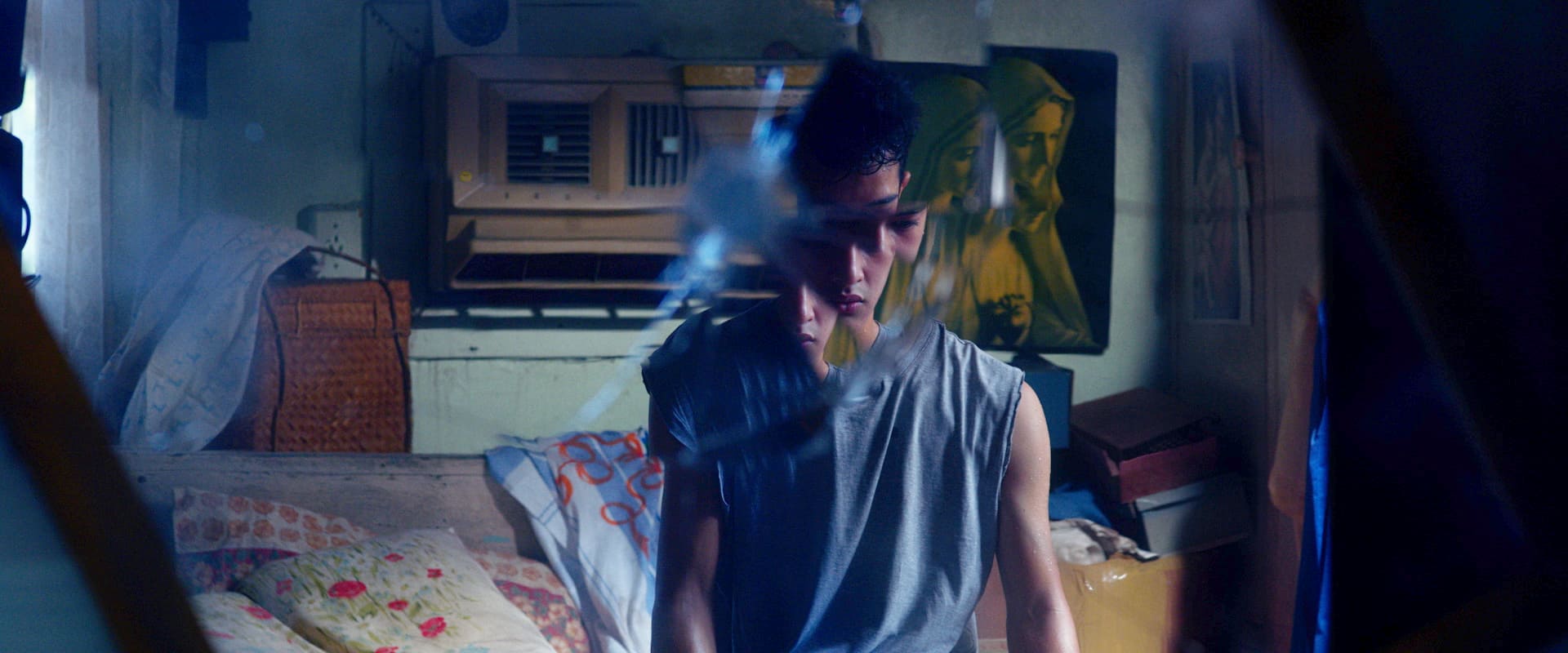
Has the film screened in the Philippines?
No, probably next year, because we are still waiting for the results of the European premiere. As much as possible, we want to limit festival screenings, until we get a European premiere. That is why we did not submit to Singapore, Qcinema etc.
And how did the audience in Tokyo react to the movie?
It was great. It was also a useful learning experience for me, because I have been telling my friends that being there is like being a David among the Goliaths. The selections there are quite high profile, but just being a member of the main selection is already a blessing for me and I see the disparity among our film and the rest, which made me think that for our next project , we need to level up.
What are you working on next?
We have a series of projects actually and we will shoot every year. For next year, we have a horror film, which I am directing. We have a series to be directed by Sonny and Arden, we have two Cinemalaya films. And we also have advertising on top. That is for 2024 and we also have some projects for 2025 and 2026.


